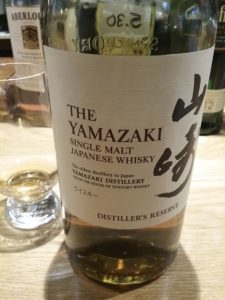In the course of my studies here at Heriot Watt, I stumbled upon some Journal articles that referred to Japanese Whisky and how the Japanese are adding Lactobacillus bacteria to the latter stages of their ferments. The precise science, I am still trying to learn but as I understand it, the bacteria create lactic acid which decarboxylates the COOH end of fatty acids. Alcohol molecules then append themselves to this severed end and the next result is an ester.
One of the Japanese whiskies I had while at the Highlander Inn in Craigellachie was Yamazaki Distillers Reserve. Every sip of this nectar was fruity and elegant thanks to the esters.
Prior to coming to Scotland in late July, I did a series of mashes using my Bourbon recipe involving Malt Rye. I obtained some Lactobacillus bacteria from yeast company Lallemand. I conducted a mash and double pot distillation of a batch with no bacteria. I conducted a similar run where I added bacteria for a set amount of time. Lastly, I did a third run where the becteria had been added for a longer time. I can tell you that the new make coming off my pot still for the 3rd batch (longest bacterial residence time) was fruity and wonderful. I am now a firm believer in adding bacteria to the ferments. My hope now is that I can find some craft distillers that are curious enough to try this technique.




